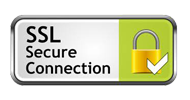Audio Recording Tips – To Reduce Cost & Improve Quality
Digital recorder
Please ensure the Recording Mode on your recorder is set to ‘Standard Mono Play’ [SP] and NOT set at high quality. If you require advice on obtaining a digital recorder, please contact us.
Familiarise yourself with your recording device
Knowing where the ‘Pause’ button is very useful for unexpected interruptions.
Telephone interviews
At the cost of $39, the Olympus TP-8 Telephone Pick-up is a great little investment to assist with achieving higher quality telephone recordings. It is a small, extra sensitive microphone that fits inside your ear and can record both sides of a phone conversation. Perfect for recording conference calls over the phone. This method is far preferable than using speakerphone. To receive your TP8 device, email service@.eScribeTranscription.com.au.
Mobile phones
Please ensure ALL mobile phones in the room are switched OFF (including yours) and NOT just left on SILENT mode. The frequency on which a call is received (including SILENT calls), interferes with the recording and is literally, painful when heard through highly sensitive headsets while transcribing and drowns out recorded audio during that time, resulting in lost data.
Microphone placement
Place your recording device on a soft cloth or tea towel to avoid picking up vibrations and amplified background noise. Place your recording device within about 30cm of each participant. Ideally, each participant should have their own microphone.
Power/Batteries
Ensure that batteries are on full power. Always use fresh batteries. Back up batteries should be kept nearby. Alternatively, if a power outlet is available, use a power adapter for your recorder.
Conduct a test recording
Before each recording, test your equipment. This will avoid organising a retake (that is if a retake is possible) in the event you are unaware of any malfunction.
Use the right environment
Negotiate a quiet, closed environment in which to conduct your interviews. Avoid open and outside areas. Identify the venue during the introduction of your recording.
Avoid common areas
Avoid public or common areas, eg lunch rooms, rooms with background noise, eg music, rotating fans, loud air conditioners. Background noise is one of the biggest cause of complex transcription and inflated costs.
Speaker identification
If speaker identification is required, ask the speakers to identify themselves when they first speak.
Ambient noises
The habits of the participant/s during the interview will also play a role in the quality of the transcript. Be aware of both yours and the participant’s habits, eg the shuffling of paper, tapping on the table, tapping feet, rocking the chair, and most importantly – the participant looking away from the microphone whilst speaking. If these actions are carried out, remind the participant to face the microphone and clarify their statement.
Foreign accents and/or softly spoken participant/s
Repeating or paraphrasing difficult to understand participants due to, for example, strong accents and/or soft spoken voices, significantly assists the transcriber in capturing audio.




